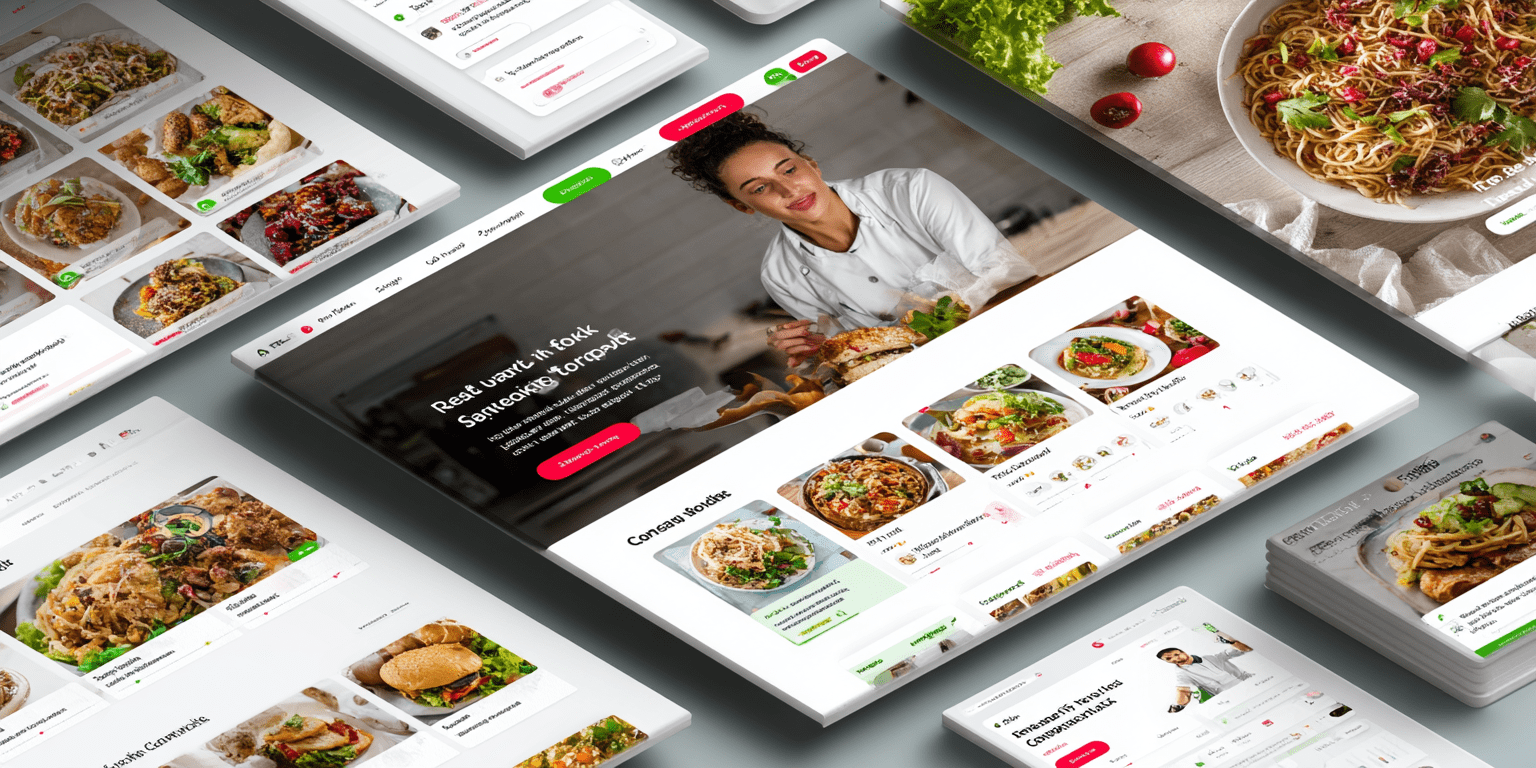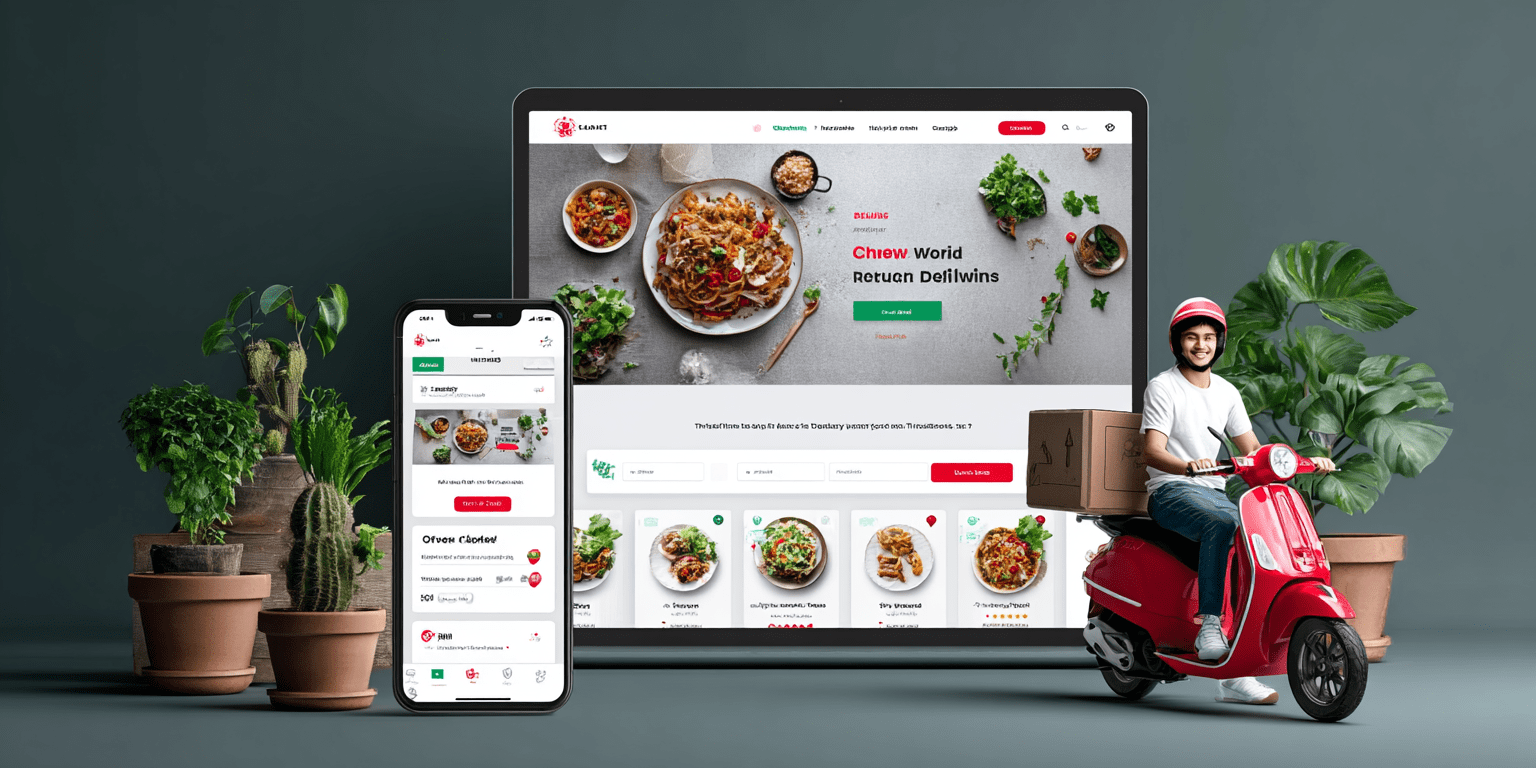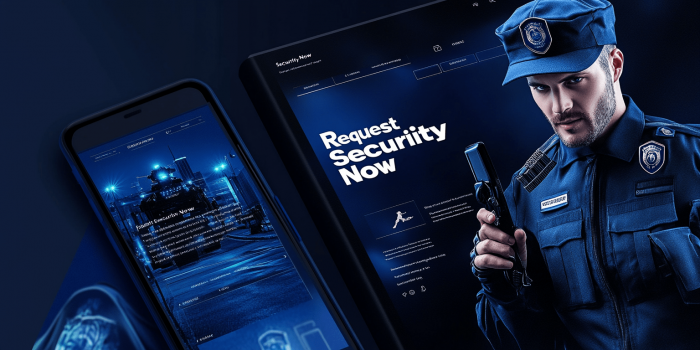The modern delivery industry is evolving at a rapid pace, requiring a constant search for more effective tools for interacting with partners. While not long ago it was enough for businesses to communicate via social media or phone calls, today the capabilities of these channels are significantly limited. That is why business owners are increasingly turning their attention to modern websites with attractive design and essential functionality that can fully meet the needs of potential clients. However, creating such websites has its specifics and requires a tailored approach, so let’s discuss which type of website is best for food delivery and what aspects deserve special attention when ordering one.

What a modern platform in this field should be like
When talking with clients in more detail about developing a food delivery website, we always highlight how it differs from a typical corporate resource in terms of structure. The main purpose of such a platform is to help users quickly find the right menu items, place and pay for an order. This is facilitated by integrations with various services that provide convenient management of all processes, allowing the owner to receive data for further development. Equally important is the ability to easily update content so that dishes remain current and interactions with customers stay comfortable.
The website’s design and ease of use play an equally crucial role, as these factors determine whether a visitor stays on the page and places an order. In addition, the website must have a responsive layout and fast loading speed, since many orders are placed via mobile devices. And data security should not be overlooked. All of this together creates a positive impression of the project as a whole, helping to attract new customers and retain regular ones by offering them new and interesting items to order.
Comparison of popular food delivery platforms
First and foremost, when we consult with a client, we discuss the format of the future platform. Among the options, particular attention is paid to the following solutions:
- Website builders. Online platforms such as Wix and Tilda help create a food delivery website quickly using intuitive tools and pre-made blocks, which make it easy to set up the necessary pages without special knowledge or significant investment.
- Ready-made aggregator solutions. Connecting to platforms like Glovo or Raketa allows restaurants to list their menu inside the aggregator and receive a stream of orders without the need to develop their own website or use complex technical solutions.
- CRM-integrated platforms. Modern tools such as Poster POS combine the website with order tracking and analytics systems, simplifying the management process for business owners and allowing them to focus on service improvement.
- Restaurant menu-based solutions. Ready-made templates designed specifically for restaurants allow for quick setup of a user-friendly menu with photos, food filters, and online payment options while maintaining the brand’s visual style.
- Cloud delivery platforms. GloriaFood and Square Online offer cloud-based solutions where all technical aspects are already resolved, allowing the owner to focus solely on improving service and working with clients.
Despite their advantages, such solutions often come with limitations in functionality, design, and structure, which do not account for the unique features of a specific business. This often leads to a situation where the owner ends up with a resource that does not meet their real needs and cannot fully realize their ideas or adapt to current market demands. A full custom website development eliminates these issues and makes it possible to create a project that fully aligns with current business objectives. This approach emphasizes the uniqueness of the company and supports its further development in accordance with the technical requirements and client preferences.
Key elements of a successful food delivery website
Before starting the development of a website of any complexity, we recommend that business owners consider the following key components of a modern food delivery platform:
| Menu with photos and descriptions. | A well-structured catalog with high-quality photos and detailed descriptions allows the customer to make a choice quickly by finding exactly what they need. |
| Convenient order cart. | A user-friendly cart allows items to be added or removed instantly and shows the final cost, enabling a seamless transition to checkout. |
| Personal user account. | A profile with order history and the ability to save preferences provides a smooth user experience and makes repeat purchases significantly easier. |
| Review and rating system. | Ratings and real feedback from other customers build trust in the service and help new users make informed decisions. |
| Online payment module. | A secure and convenient payment system directly on the website without third-party services saves time and enhances user interaction with the platform. |
| Order tracking system. | A tracking feature shows the status of the order and the courier’s location, adding confidence in the delivery process. |
Additional functionality that increases the appeal of a food delivery website
When we begin developing a corporate website for a company, we focus primarily on the platform’s functionality and capabilities. Depending on the specifics and scale of a particular business, we apply different tools and solutions, but they usually include the following:
- Module for managing promotions and loyalty programs. This allows for flexible configuration of special offers and cashback, encouraging repeat purchases and helping retain loyal customers.
- Integration with social networks to attract an audience. This facilitates quick responses to demand and speeds up user acquisition, opening new growth opportunities.
- Adding video reviews or virtual tours of the menu. This enhances the user experience and helps present specific menu categories more vividly, making the platform more engaging.
- Ability to enable push notifications for updates and news. This ensures fast communication and easy client notifications about promotions, menu changes, or special offers.
- Delivery cost calculator based on distance and promotions. This allows customers to calculate the final cost in advance, increasing trust in the service and creating a positive impression.
- Separate blocks for new, recommended, and popular dishes. This improves usability and structure, helping clients quickly find interesting options and navigate the catalog with ease.
Need a website that attracts clients and supports your business growth? Then we invite you to collaborate! QuatroIT web studio offers comprehensive turnkey internet marketing, with a personalized approach to every project and flexible integration of site features into existing business processes. Interested in our offer? Contact us – we’ll be happy to help!

Q&A about food delivery website development
Is a separate mobile version of the website necessary?
Most websites today use responsive design that automatically adjusts pages for different devices. This ensures they look good on both computers and smartphones, so creating a separate version is generally unnecessary. However, if there are specific mobile requirements or additional marketing needs, developing a mobile app can be considered separately.
How long does it take to launch a full-featured food delivery site?
The timeline depends on many factors – design complexity, number of integrations, and additional configurations. In most cases, creating such a website takes from one to three months, including development, testing, and final checks. This approach ensures all details are accounted for and results in a fully prepared platform tailored to the client’s needs and business specifics.
How is the menu updated on the site?
This is typically done through the admin panel, where the owner or manager can add new items, change descriptions, prices, or photos. No programming skills or special knowledge are required. Just a few clicks are enough to upload the necessary content and update the menu.
Can a food delivery website be set up in multiple languages at once?
Multilingual functionality helps attract a broader customer base by letting users choose their preferred language when viewing the menu and placing orders. It’s configured through the admin panel. If you’re interested in this topic, we also recommend reading about how a corporate website can attract clients – where we covered this issue as one of the key success factors.
How is customer data security ensured?
User data protection is achieved through SSL certificates, regular system updates, and implementation of modern cybersecurity technologies. All of this minimizes the risk of data breaches and builds trust among visitors. Additionally, the owner must fully comply with data privacy legislation concerning the handling of customer information.
Is it worth using SEO to promote a food delivery site?
Proper SEO optimization is crucial, as it improves search engine rankings and attracts potential customers. It also shapes a positive brand image, boosts user trust, and strengthens company reputation. This makes the website more recognizable and appealing, which has a direct impact on business growth.











